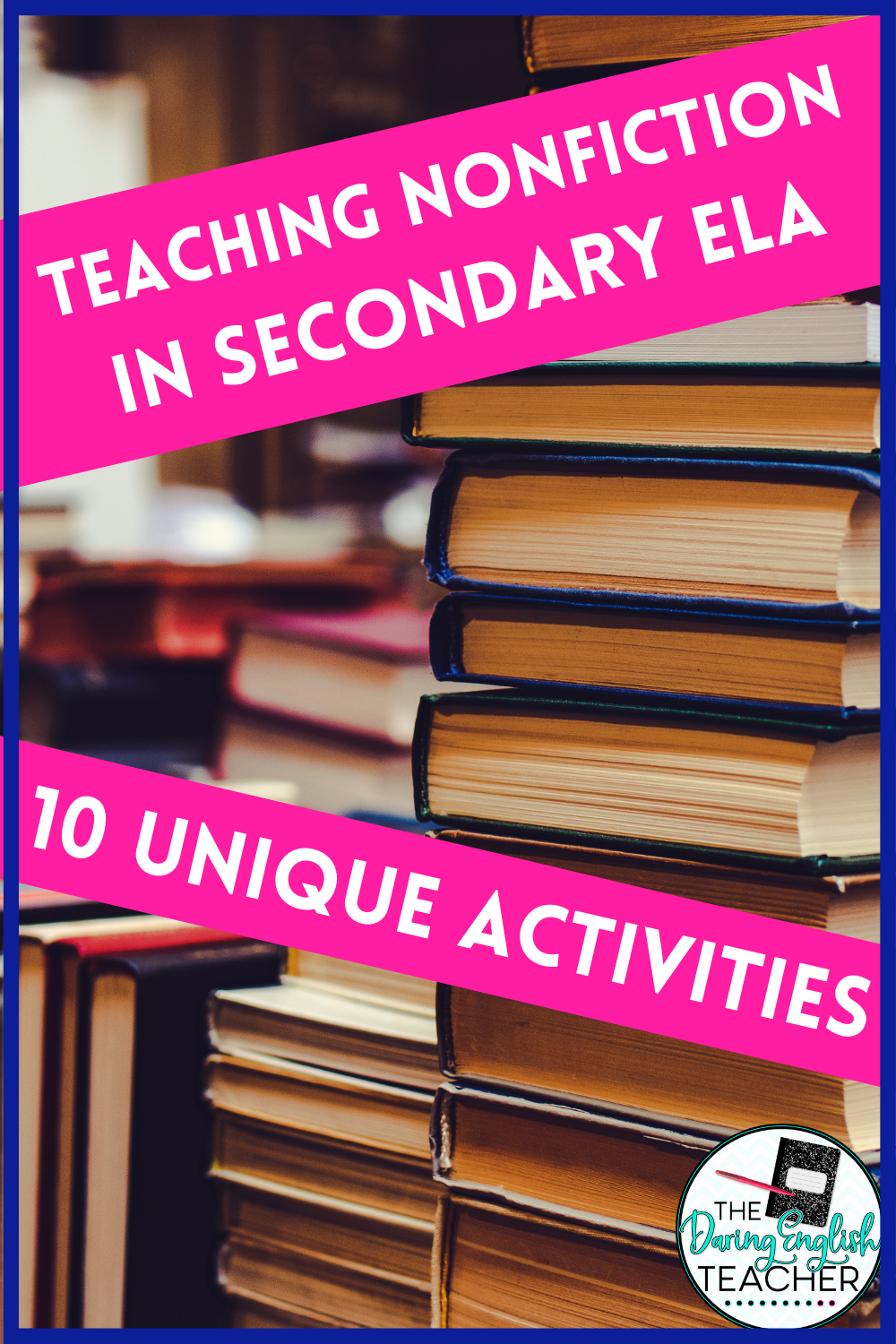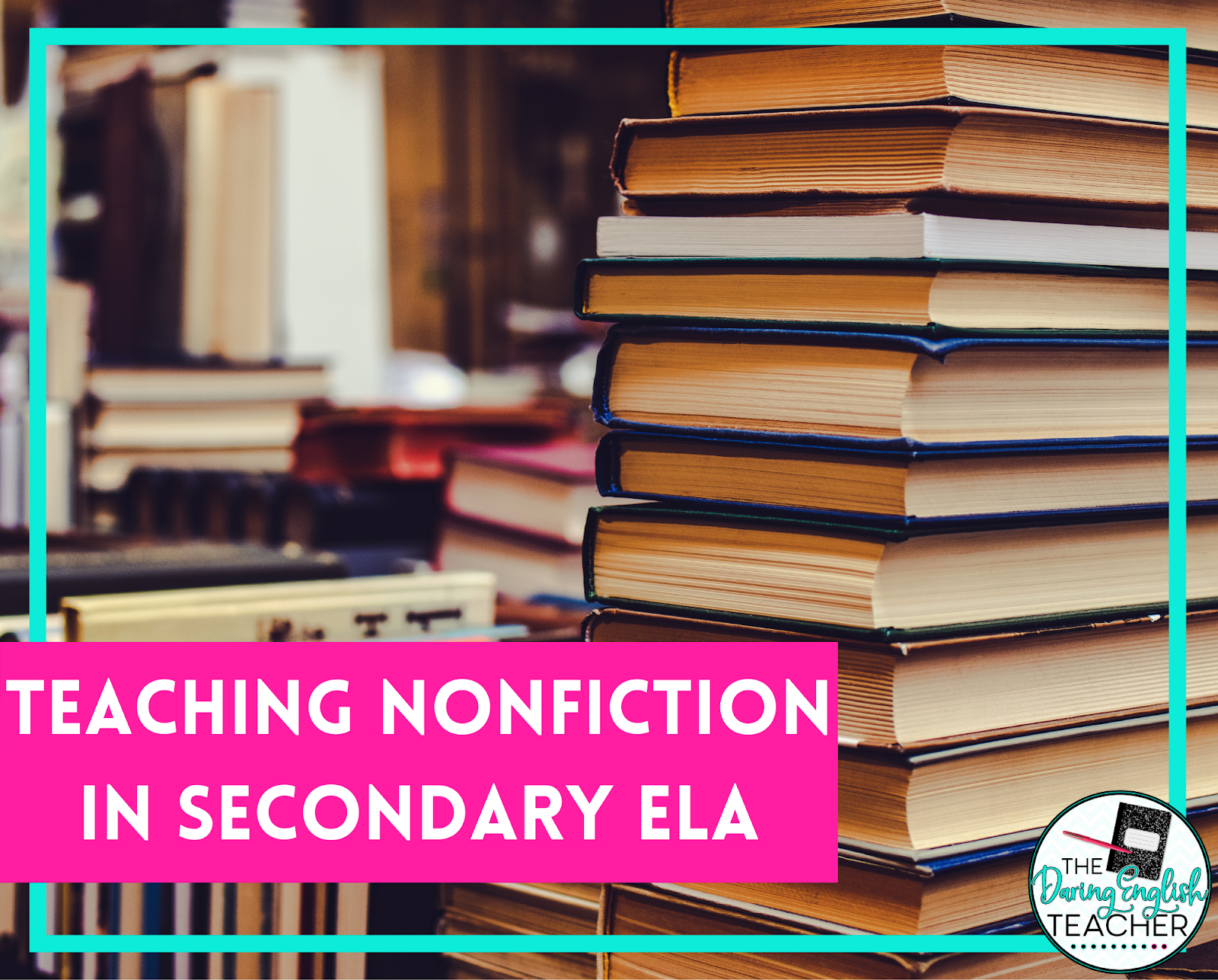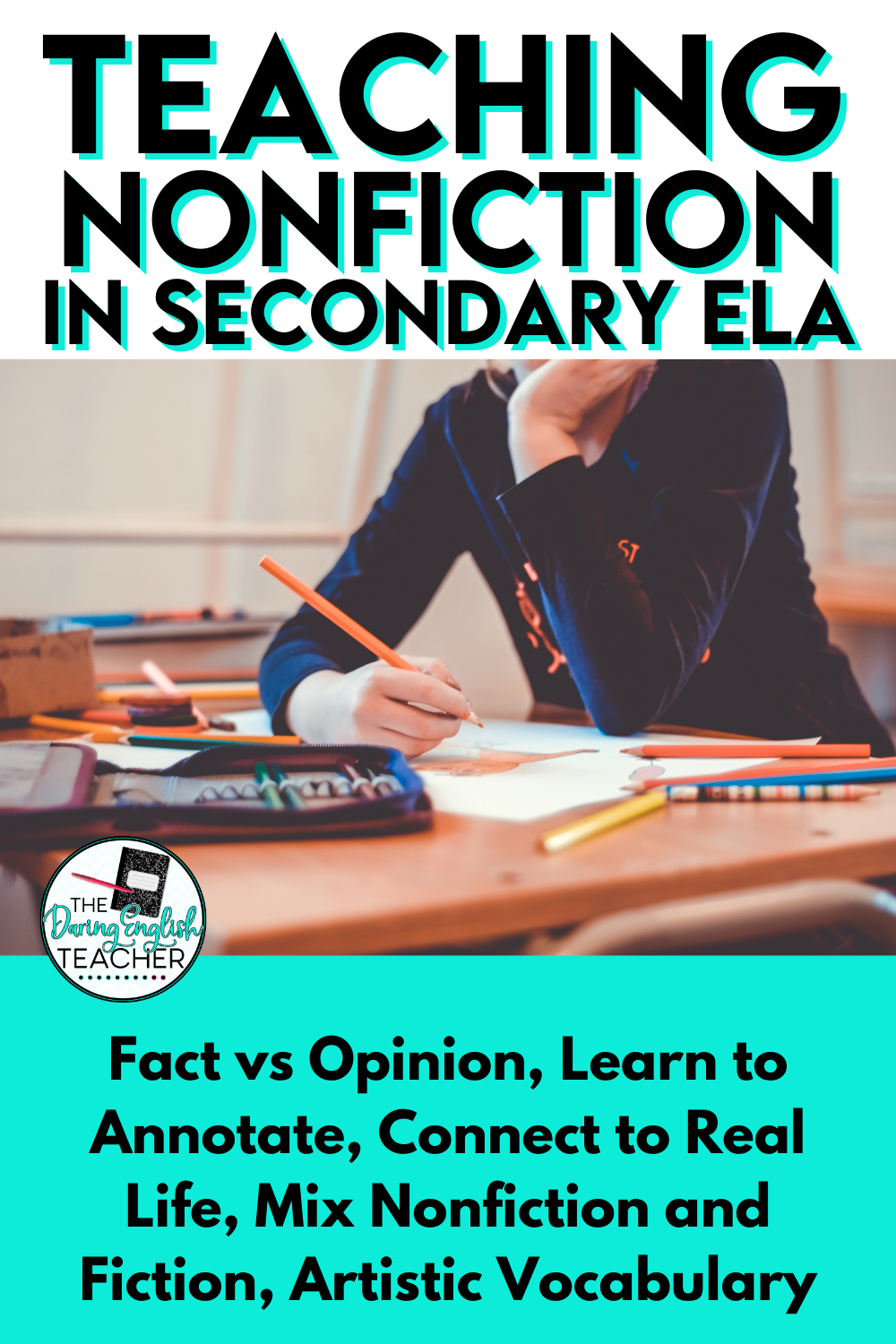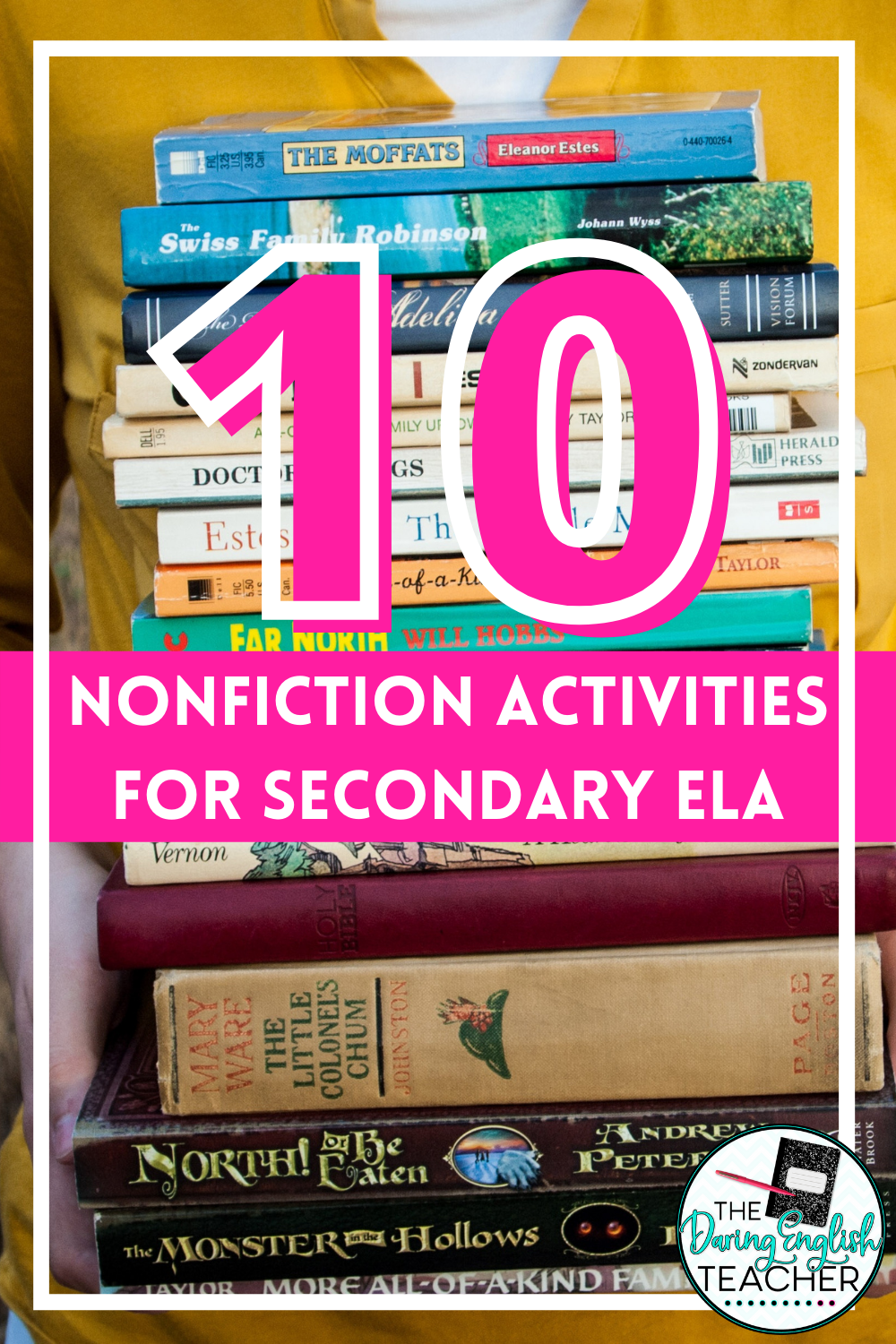When it comes to reading nonfiction, my students tend to get bleary-eyed and hard-of-hearing. It’s like they instantly think of their history textbooks and informational articles and they decide before they even know the topic that they aren’t going to like it. And that is one of the big hurdles when it comes to teaching nonfiction texts at the middle school and high school level.
For many students, nonfiction is like the vegetable of literature, but it doesn’t have to be this way. This is why I work hard to make sure I have a variety of activities to engage my students. Read about some of my favorites below.
1. Teaching Nonfiction: Fact vs Opinion
This super easy activity simply involves you presenting the topic of study and having students create a class list of information. Students share what they know (or think) they know about the subject. You can then assign a pre-reading activity separating fact from fiction, or have students revisit the list after reading.
2. Teaching Nonfiction: Learn to Annotate
Annotating is such an important skill because your students learn to engage with the text. It also has shown to improve retention, and helps increase critical thinking. My annotating fiction task cards is a great nonfiction annotation that you can use for any nonfiction text. The task cards and activities will help students grow more confident in their annotating skills as they explore a variety of nonfiction articles. There’s also a full annotation bundle that includes fiction and poetry annotation. You can find that here in my Annotating Task Cards Bundle.
3. Teaching Nonfiction: Connect to Real Life
It truly is important for readers to connect to text in order to retain information and stay engaged.
Have students keep a journal during the reading to jot down connections that they see either to themselves, or to society as a whole. While not every subject will necessarily personally resonate with students, they can learn to look at the “bigger picture” and see the connections to the world around them.
4. Teaching Nonfiction: Mix Nonfiction and Fiction
Sometimes choosing nonfiction study feels like we are making a sacrifice in the literature category. It seems hard to fit everything in, so why not combine? Teaching nonfiction works very well when you pair it with the literature you are already reading in class. When you have fictional literature to study, take time to showcase the nonfiction connections with your students. For example, a contemporary novels class reading The Hunger Games might choose to make connections to works like Diary of Anne Frank or Elie Wiesel’s Night. You can also work with your librarian to showcase fiction/nonfiction pairings to encourage students to read a variety of different types of texts.
5. Teaching Nonfiction: Artistic Vocabulary
Another turn-off for nonfiction is that it also comes with vocabulary. Instead of a vocabulary list paired with a quiz, consider tapping into creative and artistic activities instead. Students can create a visual word wall on the bulletin board, digitally create slides or images (a great alternative for those working virtually), or have students create Wordles after reading the text to show their understanding.
6. Teaching Nonfiction: Sticky Note Questions
Sticky notes are so versatile. Give your students a small stack before reading and have them write questions, connections, or thoughts and stick them right on the page. Students can then turn to their sticky notes rather than leafing through their notebooks for their questions and figuring out where in the reading their thought came from. You might have students read individually with their sticky notes and then come together as a class or group to answer. This also can pair nicely with annotation activities.
7. Teaching Nonfiction: Tweet About It
Another way to have students practice critical thinking and summarizing skills is to have students “tweet” about the nonfiction work. You can provide prompts about specific events or people, or simply have students jot down their tweet as you check for understanding. This is a great way to break up long texts into manageable “chunks” by tweeting about independent events, people, or chapters. The tweets can later serve as a class review in manageable bits.
8. Teaching Nonfiction: …or TikTok
I can’t believe I’m saying this, but there’s no doubt that viral video trends are a major influence in students’ lives. Use that to your advantage and let students create short videos to showcase information. Find school-appropriate challenges or songs that are trending and let students use their creativity. Even if you’re virtual, students can use their video features to film. Have them think about how they would recreate an event in a modern way, and make it bite-size to fit the one-minute time limit. Have them pretend to be a person you’re studying – what challenges would they attempt?
9. Teaching Nonfiction: Play to Interests
It can seem overwhelming trying to fit in all of the topics of study during the year, but it is worth the time to squeeze in the opportunity for your students to choose their own topics. Why not make it nonfiction study to help encourage engagement? Alternatively, you can have the class make a list together of their interests and then you select at your discretion.
10. Teaching Nonfiction: Make it Interactive
Rather than a go-to research paper, or simply studying from autobiographies, make a more interactive assignment. There are many different types of escape rooms for a variety of subjects. There are even escape room templates so you can design your own with the puzzles already created – you just need to fill in the information. If you’re not looking for a full scale escape room, start with smaller puzzles, riddles, or decoding and apply it to a scavenger hunt style of assignment. Your students will still read the same nonfiction, but might be more invested in solving brain teasers like these.
For more reading about teaching nonfiction, check out this blog post about 5 ways to analyze nonfiction!
If you are looking for more nonfiction teaching materials, you might be interested in these resources:
Annotating Made Easy
Paraphrasing, Summarizing, and Quoting




